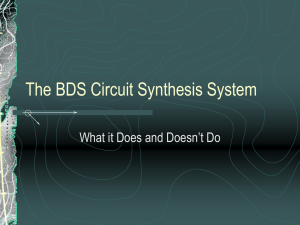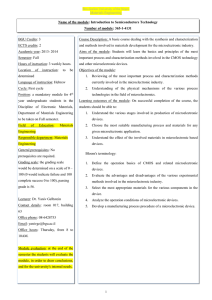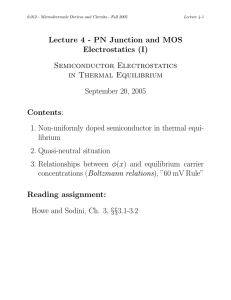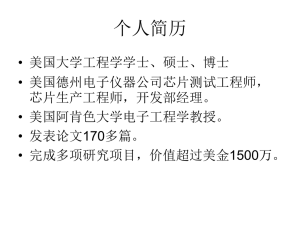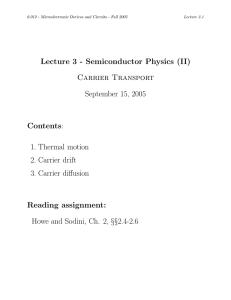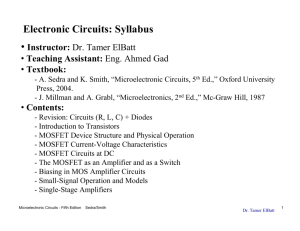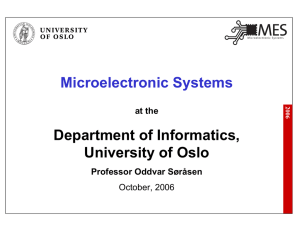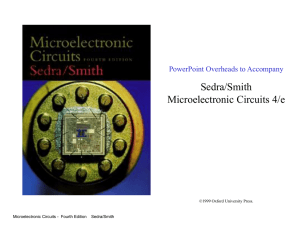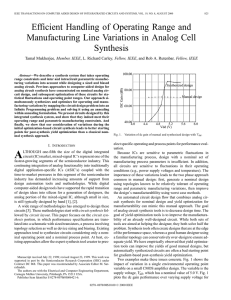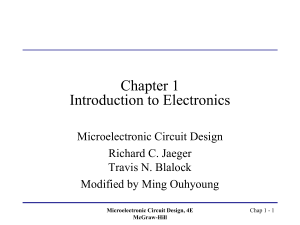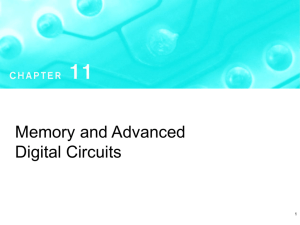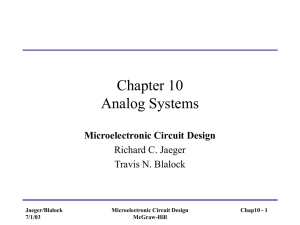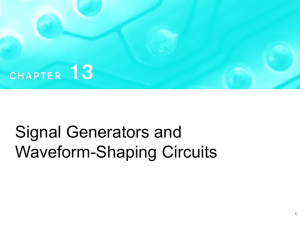DESIGN OF VLSI CIRCUITS WHAT IS THIS CLASS ABOUT?
advertisement
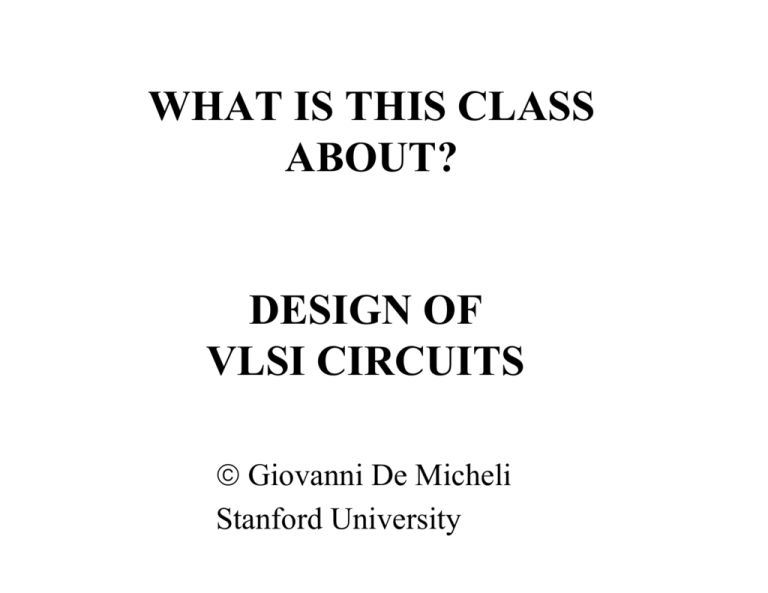
WHAT IS THIS CLASS ABOUT? DESIGN OF VLSI CIRCUITS Giovanni De Micheli Stanford University Microelectronics • Enabling and strategic technology. • Primary markets: – Information systems. – Telecommunications. – Consumer. • Secondary markets: – Systems (e.g., transportation). – Manufacturing (e.g., robots). • Application of VSLI circuit technology. Computer-Aided Design • Enabling design methodology. • Makes electronic design possible: – Large scale design management. – Design optimization. – Reduced design time. • Key strategic importance. Electronic market Trends in microelectronics • Improvements in device technology: – Smaller circuits. – Higher performance. – More devices on a chip. • Higher degree of integration. – More complex systems. – Lower cost of computation. – Higher reliability. Moore's law Integration-scale limitations • Intrinsic physical scaling limits. • Capital investment for fabrication. – Use of appropriate design styles. • Large-scale design management. – Use of CAD design tools. Microelectronic design problems • Use most recent technologies. – To be competitive in performance. • Reduce design cost. – To be competitive in price. • Speed-up design time. – Time-to-market is critical. Microelectronic economics • Design cost: – Design time and fabrication cost. cost – Large capital investment. – Near impossibility to repair. • Recapture costs: – Large volume production is beneficial. – Zero-defect designs are essential. – Follow market evolution. Microelectronic circuits • General-purpose processors: – High-volume sales. – High performance. • Application-Specific Integrated Circuits (ASICs): – Varying volumes and performances. • Prototypes. • Special applications (e.g. space). Microelectronic design styles • Adapt circuit design style to market requirements: • Parameters: – Cost. – Performance. – Volume. • Custom and semi-custom design. Semi-custom design Standard cells • Cell library: – Cells are designed once. – Cells are highly optimized. • Layout style: – Cells are placed in rows. – Channels are used for wiring. • Compatible with macro-cells (e.g. RAMs). Macro-cells • Module generators: – Synthesized layout. – Variable area and aspect-ratio. • Examples: – RAMs, ROMs, PLAs, general logic blocks. • Features: – Layout can be highly optimized. – Structured-custom design. Array-based design • Pre-diffused arrays: – Personalization by metalization/contacts. – Mask-Programmable Gate-Arrays. • Pre-wired arrays: – Personalization on the field. – Field-Programmable Gate-Arrays. MPGAs • Array of sites: – Each site is a set of transistors. • Batches of wafers can be pre-fabricated. • Few masks to personalize chip. • Lower cost than cell-based design. FPGAs • Array of cells: – Each cell performs a logic function. • Personalization: – Soft: memory cell (e.g. Xilinx). – Hard: Anti-fuse (e.g. Actel). • Immediate turn-around (for low volumes). • Inferior performances and density. • Good for prototyping. Semi-custom style trade-off Microelectronic circuit design and production Microelectronic circuit design • Conceptualization and modeling: – Hardware Description Languages (HDLs). • Synthesis and optimization: – Model refinement. • Validation: – Check for correctness. Modeling abstractions Modeling abstractions • Architectural level: – Operations implemented by resources. • Logic level: – Logic functions implemented by gates. • Geometrical level: – Devices are geometrical objects. Modeling views Modeling views • Behavioral view: – Abstract function. • Structural view: – An interconnection of parts. • Physical view: – Physical objects with size and positions. Modeling views and abstractions Circuit synthesis • Architectural-level synthesis: – Determine the macroscopic structure: • Interconnection of major building blocks. • Logic-level synthesis: – Determine the microscopic structure: • Interconnection of logic gates. • Geometrical-level synthesis: (Physical design) – Determine positions and connections. Modeling views Microelectronic circuit optimization • Performance: – Delay and cycle-time. – Latency. – Throughput (for pipeline applications). • Power consumption. • Area (yield and packaging cost). • Testability. Design space and evaluation space Optimization trade-off in combinational circuits Optimization trade-off in sequential circuits Pareto points • Multi-criteria optimization. • Multiple objectives. • Pareto point: – A point of the design space is a Pareto point if there is no other point with: • at least one inferior objectives. • all other objectives inferior or equal. Example • Implement f = p q r s with: – 2-input or 3-input AND gates. • Area and delay proportional to number of inputs. Example design evaluation space Summary • Computer-aided design methodology: – Capture design by HDL models. – Synthesize more detailed abstractions. – Optimize circuit parameters. • Logic synthesis and optimization: – Manipulate and optimize circuit models at the logic abstraction levels.






